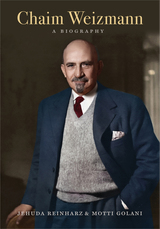782 have author last names that start with M have author last names that start with M
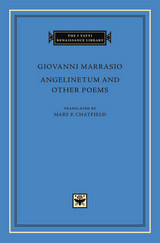
Giovanni Marrasio (d. 1452), a humanist poet from Noto in Sicily, spent the major part of his poetic career in Siena and Ferrara before returning to Palermo in the role of a medical doctor serving the University of Palermo. In Siena, Naples, and Palermo he hovered on the edge of the courts of the Este and of Alfonso “the Magnanimous” of Aragon without ever winning the title of court poet he coveted.
Marrasio was esteemed in the Renaissance as the first to revive the ancient Latin elegy, and his Angelinetum, or “Angelina’s Garden,” as well as his later poems (Carmina Varia) explore that genre in all its variety, from love poetry, to a description of a court masque, to political panegyric, to poetic exchanges with famous humanists of the day such as Leonardo Bruni, Maffeo Vegio, Antonio Panormita, and Enea Silvio Piccolomini. This volume contains the first translation of Marrasio’s works into any modern language.

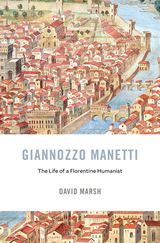
An introduction to one of the premier humanists of the Italian Renaissance, whose extraordinary work in biography, politics, religion, and philosophy has been largely unknown to Anglophone readers.
A celebrated orator, historian, philosopher, and statesman, Giannozzo Manetti (1396–1459) was one of the most remarkable figures of the Italian Renaissance. The son of a wealthy Florentine merchant, he was active in the public life of the Florentine republic and embraced the new humanist scholarship of the Quattrocento.
Among his many contributions, Manetti translated from classical Latin, Greek, and Hebrew, bringing attention to great works of the ancient world that were previously unknown. He also offered a humanist alternative to the Vulgate Bible by translating into Latin the Greek text of the New Testament and the Hebrew Psalms. His other works included biographies of Dante, Petrarch, and Boccaccio; A Translator’s Defense, an indispensable treatise on the art of translation; and Against the Jews and the Gentiles, an apologia for Christianity.
Manetti is most remembered for his treatise On Human Worth and Excellence, a radical defense of human nature and of the new world view of Renaissance humanism. In this authoritative biography, the first ever in English, David Marsh guides readers through the vast range of Manetti’s writings, which, despite growing scholarly interest, are still largely unfamiliar to the English-speaking world. Marsh’s fresh appraisal makes clear why Manetti must be considered among the great expositors of the spirit of his age.

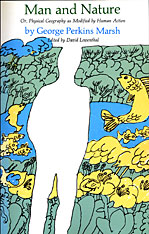

Promoting the rule of law at the national and international levels is at the heart of the United Nations’ mission and is a principle embedded throughout the Charter of the United Nations and most constitutions of nation-states. The 2012 “Declaration on the Rule of Law at the National and International Levels” adopted by the General Assembly reaffirmed that human rights, the rule of law, and democracy were interlinked and mutually reinforcing, and that they belonged to the universal and indivisible core values and principles of the United Nations. To some, the “Rule of Law” has become nothing more than empty rhetoric of individual Western states and intergovernmental bodies such as the UN, The World Bank, and the EU. In addition to conceptual uncertainty and perceived hidden agendas, there is mounting skepticism, particularly among donors, regarding rule of law promotion and its effectiveness in fragile states.
The International Rule of Law Movement critically evaluates rule of law initiatives from a contemporary global perspective. It seeks to fill the gap in knowledge among actors and to explain what has and has not been effective and why. It also proposes better models for promoting justice and the rule of law in fragile states.

In this first general history of organized labor in the south, F. Ray Marshall analyzes the main factors influencing union growth in the region from the earliest times to the present. Writing within the context of the south’s political, social, and economic history, the author provides valuable material on labor economics and labor relations.
An opening section lays the foundation for the analysis by reviewing the south’s unique economic and social characteristics, with a discussion of the beginnings of unions in the area and some of their activities and problems prior to 1928. The author then traces in detail the growth of key unions before 1932 and presents an evaluation of the 1930 southern organizing campaign of the AFL. An examination follows of the impact of the social ferment inspired by the New Deal. In Part IV, Marshall discusses union growth during and after the Second World War, with emphasis on the influence of the War Labor Board and other governmental agencies. Finally, in Part V he draws together all the main factors responsible for union expansion and union weakness in the south—economic forces, law and politics, union structure and philosophy, the characteristics of the workers, and social forces. In his concluding chapter the author assesses the possibilities for future union growth in the south through a projection of the trends brought to light in the previous chapters.

Natural microbial habitats include various interfaces--liquid-liquid, gas-liquid, solid-liquid, and solid-gas. An interface, the boundary between two phases, has physical and chemical properties that differ from those of either phase. Bacteria, yeasts, and algae often concentrate at interfaces, and the ability of microorganisms to exploit resources in their environment may be markedly affected by the nature of the available interfaces. Included within the realm of microbial activity at interfaces are such wide-ranging topics as predator-prey relations, tooth decay, gastrointestinal tract infections, mating contact, marine fouling, adsorptive bubble processes, oil degradation, rhizosphere associations, and bacterium-clay interactions.
In this book, bacteria are treated as living colloidal systems, and the behavior of microorganisms at interfaces is analyzed on the basis of this concept. Nonspecific physical and chemical forces acting on microorganisms at interfaces are described and related to biological factors determining the distribution of and interaction between microorganisms in both aquatic and terrestrial ecosystems. The final chapter describes specific microbe-microbe, microbe-plant, and microbe-animal interfacial interactions.
Although laboratory studies of cultured microorganisms are essential in assessing their potential capabilities, an individual microbial species in a natural habitat is confronted by physical, chemical, and biological interactions rarely encountered under pure culture conditions. Interfaces are important aspects of microbial ecosystems, and this study of the influence of interfaces on natural habitats is an important and original contribution to microbial ecology.

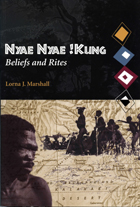
With style and depth, Lorna Marshall leads the reader through the intricacies, ambiguities, and silences of !Kung beliefs. Her narrative, based on fieldwork among the Bushmen of the Kalahari in the early 1950s, brings into focus a way of life that appears to have existed for millennia. She presents the culture, beliefs, and spirituality of one of the last true hunting-and-gathering peoples by focusing on members of different bands as they reveal their own views. This account, with photography by John Marshall, presents a system of beliefs, one in which personified deities and unpersonified supernatural forces (n!ow and n/um) interact with man and the natural world. The !Kung believe that this interaction accounts for much of the mystery of life and the vicissitudes of the good and evil that befall mankind. The book also depicts an egalitarian lifestyle based on sharing and group awareness, a lifestyle that has not survived intact the increasing integration of the Bushmen into the modern world.
A companion volume to her 1976 work, The !Kung of Nyae Nyae, this book is published to mark the recent one-hundredth birthday of Lorna Marshall.

Exploring what he considers to be the outstanding aspects of fish biology, Mr. Marshall surveys the present knowledge in the field and suggests possibilities for future investigation.
He considers the causes of the overwhelming predominance of the teleost fishes, discusses the biology of deep-sea fishes, and studies such aspects of dynamic design as body form, fin pattern, muscular organization, and certain neural features in relation to movement and water.
His last chapter, on convergent evolution, deals with convergences among fishes as well as with convergences among fishes and invertebrates, particularly crustaceans and cephalopods.
The volume is illustrated with a chart on evolutionary relationships of fishes and over fifty line drawings.

In 1777 Edmund Burke remarked that for his contemporaries “the Great Map of Mankind is unrolled at once.” The period from the late seventeenth century to the end of the eighteenth century had seen a massive increase in Britain’s knowledge of the non-European peoples of the wider world, and this was reflected in the proliferation of travel accounts of every kind.
This is a history of British perceptions of the exotic peoples and lands of Asia, North America, West Africa, and the Pacific who became well-known during that great age of exploration. It shows how the contours of intellectual and cultural history changed as news poured in. Philosophers contemplated man in a state of nature; the study of religion was broadened as Hinduism, the naturalistic religions of North America, and Chinese rites and ceremonies were revealed. Racial issues like slavery and negritude, questions about advanced versus backward nations, the great Chain of Being argument, and the Unchanging East theory became concerns of educated persons. Along with the impact of explorations on men’s ideas, the use of “sciences” like anthropology, ethnology, archeology, and philology came into vogue. And not incidentally, interest in empire grew, missionary zeal was strengthened, and tolerance and intolerance toward strangers struggled for dominance.
It could be argued that by the end of this age of “enlightenment,” investigation of the inhabitants of these distant lands had reinforced those assumptions of superiority that were an essential feature of British global expansion. To that extent this book is concerned with the intellectual foundations of the second British empire, for it seeks to show how many of the attitudes present in Britain’s dealings with the world in her imperial heyday were formulated during the eighteenth century.
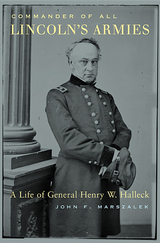
In the summer of 1862, President Lincoln called General Henry W. Halleck to Washington, D.C., to take command of all Union armies in the death struggle against the Confederacy. For the next two turbulent years, Halleck was Lincoln's chief war advisor, the man the President deferred to in all military matters. Yet, despite the fact that he was commanding general far longer than his successor, Ulysses S. Grant, he is remembered only as a failed man, ignored by posterity.
In the first comprehensive biography of Halleck, the prize-winning historian John F. Marszalek recreates the life of a man of enormous achievement who bungled his most important mission. When Lincoln summoned him to the nation's capital, Halleck boasted outstanding qualifications as a military theorist, a legal scholar, a brave soldier, and a California entrepreneur. Yet in the thick of battle, he couldn't make essential decisions. Unable to produce victory for the Union forces, he saw his power become subsumed by Grant's emergent leadership, a loss that paved the way for Halleck's path to obscurity.
Harnessing previously unused research, as well as the insights of modern medicine and psychology, Marszalek unearths the seeds of Halleck's fatal wartime indecisiveness in personality traits and health problems. In this brilliant dissection of a rich and disappointed life, we gain new understanding of how the key decisions of the Civil War were taken, as well as insight into the making of effective military leadership.
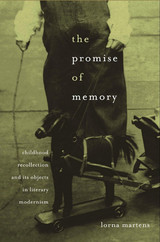
Readers once believed in Proust’s madeleine and in Wordsworth’s recollections of his boyhood—but that was before literary culture began to defer to Freud’s questioning of adult memories of childhood. In this first sustained look at childhood memories as depicted in literature, Lorna Martens reveals how much we may have lost by turning our attention the other way. Her work opens a new perspective on early recollection—how it works, why it is valuable, and how shifts in our understanding are reflected in both scientific and literary writings.
Science plays an important role in The Promise of Memory, which is squarely situated at the intersection of literature and psychology. Psychologists have made important discoveries about when childhood memories most often form, and what form they most often take. These findings resonate throughout the literary works of the three writers who are the focus of Martens’ book. Proust and Rilke, writing in the modernist period before Freudian theory penetrated literary culture, offer original answers to questions such as “Why do writers consider it important to remember childhood? What kinds of things do they remember? What do their memories tell us?” In Walter Benjamin, Martens finds a writer willing to grapple with Freud, and one whose writings on childhood capture that struggle.
For all three authors, places and things figure prominently in the workings of memory. Connections between memory and materiality suggest new ways of understanding not just childhood recollection but also the artistic inclination, which draws on a childlike way of seeing: object-focused, imaginative, and emotionally intense.

Poetic concision in abundance.
It was to celebrate the opening of the Roman Colosseum in AD 80 that Martial published his first book of poems, “On the Spectacles.” Written with satiric wit and a talent for the memorable phrase, the poems in this collection record the broad spectacle of shows in the new arena. The great Latin epigrammist’s twelve subsequent books capture the spirit of Roman life—both public and private—in vivid detail. Fortune hunters and busybodies, orators and lawyers, schoolmasters and street hawkers, jugglers and acrobats, doctors and plagiarists, beautiful slaves, and generous hosts are among the diverse characters who populate his verses.
Martial is a keen and sharp-tongued observer of Roman society. His pen brings into crisp relief a wide variety of scenes and events: the theater and public games, life in the countryside, a rich debauchee’s banquet, lions in the amphitheater, the eruption of Vesuvius. The epigrams are sometimes obscene, in the tradition of the genre, sometimes warmly affectionate or amusing, and always pointed. Like his contemporary Statius, though, Martial shamelessly flatters his patron Domitian, one of Rome’s worst-reputed emperors.
D. R. Shackleton Bailey’s translation of Martial’s often difficult Latin eliminates many misunderstandings in previous versions. The text is mainly that of his highly praised Teubner edition of 1990.

Poetic concision in abundance.
It was to celebrate the opening of the Roman Colosseum in AD 80 that Martial published his first book of poems, “On the Spectacles.” Written with satiric wit and a talent for the memorable phrase, the poems in this collection record the broad spectacle of shows in the new arena. The great Latin epigrammist’s twelve subsequent books capture the spirit of Roman life—both public and private—in vivid detail. Fortune hunters and busybodies, orators and lawyers, schoolmasters and street hawkers, jugglers and acrobats, doctors and plagiarists, beautiful slaves, and generous hosts are among the diverse characters who populate his verses.
Martial is a keen and sharp-tongued observer of Roman society. His pen brings into crisp relief a wide variety of scenes and events: the theater and public games, life in the countryside, a rich debauchee’s banquet, lions in the amphitheater, the eruption of Vesuvius. The epigrams are sometimes obscene, in the tradition of the genre, sometimes warmly affectionate or amusing, and always pointed. Like his contemporary Statius, though, Martial shamelessly flatters his patron Domitian, one of Rome’s worst-reputed emperors.
D. R. Shackleton Bailey’s translation of Martial’s often difficult Latin eliminates many misunderstandings in previous versions. The text is mainly that of his highly praised Teubner edition of 1990.

Poetic concision in abundance.
It was to celebrate the opening of the Roman Colosseum in AD 80 that Martial published his first book of poems, “On the Spectacles.” Written with satiric wit and a talent for the memorable phrase, the poems in this collection record the broad spectacle of shows in the new arena. The great Latin epigrammist’s twelve subsequent books capture the spirit of Roman life—both public and private—in vivid detail. Fortune hunters and busybodies, orators and lawyers, schoolmasters and street hawkers, jugglers and acrobats, doctors and plagiarists, beautiful slaves, and generous hosts are among the diverse characters who populate his verses.
Martial is a keen and sharp-tongued observer of Roman society. His pen brings into crisp relief a wide variety of scenes and events: the theater and public games, life in the countryside, a rich debauchee’s banquet, lions in the amphitheater, the eruption of Vesuvius. The epigrams are sometimes obscene, in the tradition of the genre, sometimes warmly affectionate or amusing, and always pointed. Like his contemporary Statius, though, Martial shamelessly flatters his patron Domitian, one of Rome’s worst-reputed emperors.
D. R. Shackleton Bailey’s translation of Martial’s often difficult Latin eliminates many misunderstandings in previous versions. The text is mainly that of his highly praised Teubner edition of 1990.
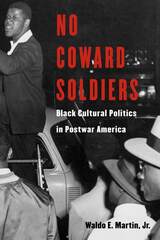
In a vibrant and passionate exploration of the twentieth-century civil rights and black power eras in American history, Waldo Martin uses cultural politics as a lens through which to understand the African-American freedom struggle.
In black culture, argues Martin, we see the debate over the profound tension at the core of black identity: the duality of being at once both American and African. And in the transformative postwar period, the intersection between culture and politics became increasingly central to the African-American fight for equality. In freedom songs, in the exuberance of an Aretha Franklin concert, in Faith Ringgold’s exploration of race and sexuality, the personal and social became the political.
Martin explores the place of black culture in this vision and examines the multiple ways in which various forms of expressive culture and African-American cultural figures influenced consciousness and helped effect social action. From the music of John Coltrane and James Brown to the visual art of Jacob Lawrence and Betye Saar to the dance movements of Alvin Ailey and Arthur Mitchell, Martin discusses how, why, and with what consequences culture became a critical battle site in the freedom struggle. And in a fascinating epilogue, he draws the thread of black cultural politics into today’s hip-hop culture.
This engaging book brings a new perspective to the civil rights and black power eras, while illuminating the broader history of American and global freedom struggles.
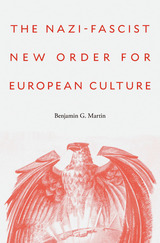
Following France’s crushing defeat in June 1940, the Nazis moved forward with plans to reorganize a European continent now largely under Hitler’s heel. While Germany’s military power would set the agenda, several among the Nazi elite argued that permanent German hegemony required something more: a pan-European cultural empire that would crown Hitler’s wartime conquests. At a time when the postwar European project is under strain, Benjamin G. Martin brings into focus a neglected aspect of Axis geopolitics, charting the rise and fall of Nazi-fascist “soft power” in the form of a nationalist and anti-Semitic new ordering of European culture.
As early as 1934, the Nazis began taking steps to bring European culture into alignment with their ideological aims. In cooperation and competition with Italy’s fascists, they courted filmmakers, writers, and composers from across the continent. New institutions such as the International Film Chamber, the European Writers Union, and the Permanent Council of composers forged a continental bloc opposed to the “degenerate” cosmopolitan modernism that held sway in the arts. In its place they envisioned a Europe of nations, one that exalted traditionalism, anti-Semitism, and the Volk. Such a vision held powerful appeal for conservative intellectuals who saw a European civilization in decline, threatened by American commercialism and Soviet Bolshevism.
Taking readers to film screenings, concerts, and banquets where artists from Norway to Bulgaria lent their prestige to Goebbels’s vision, Martin follows the Nazi-fascist project to its disastrous conclusion, examining the internal contradictions and sectarian rivalries that doomed it to failure.
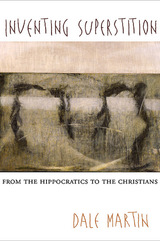
The Roman author Pliny the Younger characterizes Christianity as “contagious superstition”; two centuries later the Christian writer Eusebius vigorously denounces Greek and Roman religions as vain and impotent “superstitions.” The term of abuse is the same, yet the two writers suggest entirely different things by “superstition.”
Dale Martin provides the first detailed genealogy of the idea of superstition, its history over eight centuries, from classical Greece to the Christianized Roman Empire of the fourth century C.E. With illuminating reference to the writings of philosophers, historians, and medical teachers he demonstrates that the concept of superstition was invented by Greek intellectuals to condemn popular religious practices and beliefs, especially the belief that gods or other superhuman beings would harm people or cause disease. Tracing the social, political, and cultural influences that informed classical thinking about piety and superstition, nature and the divine, Inventing Superstition exposes the manipulation of the label of superstition in arguments between Greek and Roman intellectuals on the one hand and Christians on the other, and the purposeful alteration of the idea by Neoplatonic philosophers and Christian apologists in late antiquity.
Inventing Superstition weaves a powerfully coherent argument that will transform our understanding of religion in Greek and Roman culture and the wider ancient Mediterranean world.
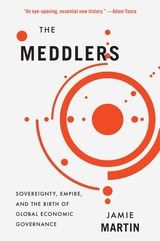
“The Meddlers is an eye-opening, essential new history that places our international financial institutions in the transition from a world defined by empire to one of nation states enmeshed in the world economy.”
—Adam Tooze, Columbia University
An award-winning history traces the origins of global economic governance—and the political conflicts it generates—to the aftermath of World War I.
International economic institutions like the International Monetary Fund and World Bank exert incredible influence over the domestic policies of many states. These institutions date from the end of World War II and amassed power during the neoliberal era of the late twentieth century. But as Jamie Martin shows, if we want to understand their deeper origins and the ideas and dynamics that shaped their controversial powers, we must turn back to the explosive political struggles that attended the birth of global economic governance in the early twentieth century.
The Meddlers tells the story of the first international institutions to govern the world economy, including the League of Nations and Bank for International Settlements, created after World War I. These institutions endowed civil servants, bankers, and colonial authorities from Europe and the United States with extraordinary powers: to enforce austerity, coordinate the policies of independent central banks, oversee development programs, and regulate commodity prices. In a highly unequal world, they faced a new political challenge: was it possible to reach into sovereign states and empires to intervene in domestic economic policies without generating a backlash?
Martin follows the intense political conflicts provoked by the earliest international efforts to govern capitalism—from Weimar Germany to the Balkans, Nationalist China to colonial Malaya, and the Chilean desert to Wall Street. The Meddlers shows how the fraught problems of sovereignty and democracy posed by institutions like the IMF are not unique to late twentieth-century globalization, but instead first emerged during an earlier period of imperial competition, world war, and economic crisis.

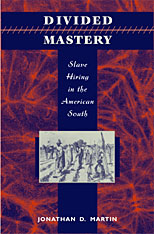
Divided Mastery explores a curiously neglected aspect of the history of American slavery: the rental of slaves. Though few slaves escaped being rented out at some point in their lives, this is the first book to describe the practice, and its effects on both slaves and the peculiar institution.
Martin reveals how the unique triangularity of slave hiring created slaves with two masters, thus transforming the customary polarity of master-slave relationships. Drawing upon slaveholders' letters, slave narratives, interviews with former slaves, legislative petitions, and court records, Divided Mastery ultimately reveals that slave hiring's significance was paradoxical.
The practice bolstered the system of slavery by facilitating its spread into the western territories, by democratizing access to slave labor, and by promoting both production and speculation with slave capital. But at the same time, slaves used hiring to their advantage, finding in it crucial opportunities to shape their work and family lives, to bring owners and hirers into conflict with each other, and to destabilize the system of bondage. Martin illuminates the importance of the capitalist market as a tool for analyzing slavery and its extended relationships. Through its fresh and complex perspective, Divided Mastery demonstrates that slave hiring is critical to understanding the fundamental nature of American slavery, and its social, political, and economic place in the Old South.
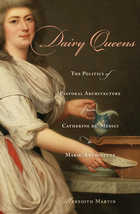
In a lively narrative that spans more than two centuries, Meredith Martin tells the story of a royal and aristocratic building type that has been largely forgotten today: the pleasure dairy of early modern France. These garden structures—most famously the faux-rustic, white marble dairy built for Marie-Antoinette’s Hameau at Versailles—have long been dismissed as the trifling follies of a reckless elite. Martin challenges such assumptions and reveals the pivotal role that pleasure dairies played in cultural and political life, especially with respect to polarizing debates about nobility, femininity, and domesticity. Together with other forms of pastoral architecture such as model farms and hermitages, pleasure dairies were crucial arenas for elite women to exercise and experiment with identity and power.
Opening with Catherine de’ Medici’s lavish dairy at Fontainebleau (c. 1560), Martin’s book explores how French queens and noblewomen used pleasure dairies to naturalize their status, display their cultivated tastes, and proclaim their virtue as nurturing mothers and capable estate managers. Pleasure dairies also provided women with a site to promote good health, by spending time in salubrious gardens and consuming fresh milk. Illustrated with a dazzling array of images and photographs, Dairy Queens sheds new light on architecture, self, and society in the ancien régime.

Bewigged, muscular and for his day unusually tall, adorned in soiled, rumpled clothes, beset by involuntary tics, opinionated, powered in his conversation by a prodigious memory and intellect, Samuel Johnson (1709–1784) was in his life a literary and social icon as no other age has produced. “Johnsonianissimus,” as Boswell called him, became in the hands of his first biographers the rationalist epitome and sage of Enlightenment. These clichés—though they contain elements of truth—distort the complexity of the public and private Johnson. Peter Martin portrays a Johnson wracked by recriminations, self-doubt, and depression—a man whose religious faith seems only to have deepened his fears. His essays, scholarship, biography, journalism, travel writing, sermons, fables, as well as other forms of prose and poetry in which he probed himself and the world around him, Martin shows, constituted rational triumphs against despair and depression. It is precisely the combination of enormous intelligence and frank personal weakness that makes Johnson’s writing so compelling.
Benefiting from recent critical scholarship that has explored new attitudes toward Johnson, Martin’s biography gives us a human and sympathetic portrait of Dr. Johnson. Johnson’s criticism of colonial expansion, his advocacy for the abolition of slavery, his encouragement of women writers, his treatment of his female friends as equals, and his concern for the underprivileged and poor make him a very “modern” figure. The Johnson that emerges from this enthralling biography, published for the tercentenary of Johnson’s birth, is still the foremost figure of his age but a more rebellious, unpredictable, flawed, and sympathetic figure than has been previously known.

Winner of the Caughey Western History Prize
Winner of the Robert G. Athearn Award
Winner of the Lawrence W. Levine Award
Winner of the TCU Texas Book Award
Winner of the NACCS Tejas Foco Nonfiction Book Award
Winner of the María Elena Martínez Prize
Frederick Jackson Turner Award Finalist
“A page-turner…Haunting…Bravely and convincingly urges us to think differently about Texas’s past.”
—Texas Monthly
Between 1910 and 1920, self-appointed protectors of the Texas–Mexico border—including members of the famed Texas Rangers—murdered hundreds of ethnic Mexicans living in Texas, many of whom were American citizens. Operating in remote rural areas, officers and vigilantes knew they could hang, shoot, burn, and beat victims to death without scrutiny. A culture of impunity prevailed. The abuses were so pervasive that in 1919 the Texas legislature investigated the charges and uncovered a clear pattern of state crime. Records of the proceedings were soon filed away as the Ranger myth flourished.
A groundbreaking work of historical reconstruction, The Injustice Never Leaves You has upended Texas’s sense of its own history. A timely reminder of the dark side of American justice, it is a riveting story of race, power, and prejudice on the border.
“It’s an apt moment for this book’s hard lessons…to go mainstream.”
—Texas Observer
“A reminder that government brutality on the border is nothing new.”
—Los Angeles Review of Books

E pluribus unum no longer holds. Out of the many have come as many claims and grievances, all at war with the idea of one nation undivided. The damage thus done to our national life, as too few Americans seek a common good, is Martin Marty's concern. His book is an urgent call for repair and a personal testament toward resolution.
A world-renowned authority on religion and ethics in America, Marty gives a judicious account (itself a rarity and a relief in our day of uncivil discourse) of how the body politic has been torn between the imperative of one people, one voice, and the separate urgings of distinct identities--racial, ethnic, religious, gendered, ideological, economic. Foreseeing an utter deadlock in public life, with devastating consequences, if this continues, he envisions steps we might take to carry America past the new turbulence.
While the grand story of oneness eludes us (and probably always will), Marty reminds us that we do have a rich, ever-growing, and ever more inclusive repertory of myths, symbols, histories, and, most of all, stories on which to draw. He pictures these stories, with their diverse interpretations, as part of a conversation that crosses the boundaries of groups. Where argument polarizes and deafens, conversation is open ended, guided by questions, allowing for inventiveness, fair play, and dignity for all. It serves as a medium in Marty's broader vision, which replaces the restrictive, difficult, and perhaps unattainable ideal of "community" with the looser, more workable idea of "association."
An "association of associations" is what Marty contemplates, and for the spirit and will to promote it he looks to eighteenth-century motifs of sentiment and affection, convergences of intellect and emotion that develop from shared experience. And as this book so eloquently reminds us, America, however diverse, is an experience we all share.
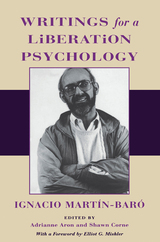
“In your country,” Ignacio Martín-Baró remarked to a North American colleague, “it’s publish or perish. In ours, it’s publish and perish.” In November 1989 a Salvadoran death squad extinguished his eloquent voice, raised so often and so passionately against oppression in his adopted country. A Spanish-born Jesuit priest trained in psychology at the University of Chicago, Martín-Baró devoted much of his career to making psychology speak to the community as well as to the individual. This collection of his writings, the first in English translation, clarifies Martín-Baró’s importance in Latin American psychology and reveals a major force in the field of social theory.
Gathering essays from an array of professional journals, this volume introduces readers to the questions and concerns that shaped Martín-Baró’s thinking over several decades: the psychological dimensions of political repression, the impact of violence and trauma on child development and mental health, the use of psychology for political ends, religion as a tool of ideology, and defining the “real” and the “normal” under conditions of state-sponsored violence and oppression, among others. Though grounded in the harsh realities of civil conflict in Central America, these essays have broad relevance in a world where political and social turmoil determines the conditions of daily life for so many. In them we encounter Martín-Baró’s humane, impassioned voice, reaffirming the essential connections among mental health, human rights, and the struggle against injustice. His analysis of contemporary social problems, and of the failure of the social sciences to address those problems, permits us to understand not only the substance of his contribution to social thought but also his lifelong commitment to the campesinos of El Salvador.
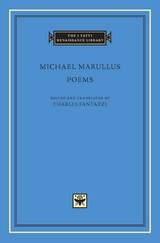
Michael Marullus (c. 1453/4–1500), born in Greece, began life as a mercenary soldier but became a prominent Neo-Latin poet and scholar who worked in Florence and Naples. He married the beautiful and learned Alessandra Scala, daughter of the humanist Bartolomeo Scala, chancellor of Florence, and his Epigrams bring alive the circle of Lorenzo di Pierfrancesco de’Medici. Among Marullus’ influences were ancient Greek texts such as the Homeric and Orphic hymns, the Corpus Hermeticum, the hymns of Proclus, Cleanthes, and Callimachus, and Julian the Apostate’s Hymn to the Sun. Marullus was particularly important, however, as one of the first Renaissance poets to imitate the works of Lucretius, and one witness reported that, after his death by drowning, a copy of the Roman poet’s works was found in his saddlebag. Later poets imitated him in vernacular love poetry, especially Ronsard; he even appears as a shadowy figure in the pages of George Eliot’s Romola, where he is depicted as a confirmed pagan.
This edition contains Marullus’ complete Latin poetry. All of these works appear in English translation for the first time.
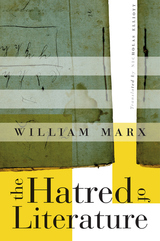
For the last 2,500 years literature has been attacked, booed, and condemned, often for the wrong reasons and occasionally for very good ones. The Hatred of Literature examines the evolving idea of literature as seen through the eyes of its adversaries: philosophers, theologians, scientists, pedagogues, and even leaders of modern liberal democracies. From Plato to C. P. Snow to Nicolas Sarkozy, literature’s haters have questioned the value of literature—its truthfulness, virtue, and usefulness—and have attempted to demonstrate its harmfulness.
Literature does not start with Homer or Gilgamesh, William Marx says, but with Plato driving the poets out of the city, like God casting Adam and Eve out of Paradise. That is its genesis. From Plato the poets learned for the first time that they served not truth but merely the Muses. It is no mere coincidence that the love of wisdom (philosophia) coincided with the hatred of poetry. Literature was born of scandal, and scandal has defined it ever since.
In the long rhetorical war against literature, Marx identifies four indictments—in the name of authority, truth, morality, and society. This typology allows him to move in an associative way through the centuries. In describing the misplaced ambitions, corruptible powers, and abysmal failures of literature, anti-literary discourses make explicit what a given society came to expect from literature. In this way, anti-literature paradoxically asserts the validity of what it wishes to deny. The only threat to literature’s continued existence, Marx writes, is not hatred but indifference.
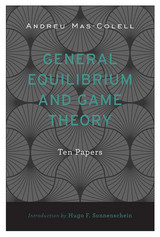
Andreu Mas-Colell revolutionized our understanding of competitive markets, price formation, and the behavior of market participants. General Equilibrium and Game Theory offers readers a compendium of his most important scholarly contributions, gathering in a single volume the groundbreaking papers that have solidified his standing as one of the preeminent economic theorists of our time.
Built upon the foundations of neoclassical economics, Mas-Colell’s work is distinguished by a mathematical and analytical elegance that brings theory closer to real-world situations. He overturns the standard assumption of general equilibrium theory—that markets are perfectly competitive and their participants are perfectly rational—and concludes that neither the law of supply and demand nor the existence of equilibrium prices depends on the rationality of agents. Similarly, Mas-Colell (working with Sergiu Hart) challenges classical game theory’s reliance on rational behavior, demonstrating that adaptation and learning shape the dynamics of repeated games.
Addressing central questions of finance, trade, industrial organization, and welfare economics, Mas-Colell shows the surprising power and versatility of differentiability and linear-space mathematical techniques, and he emphasizes the fruitfulness of cooperative game-theory approaches, such as Shapley value theory and the Bargaining Set, for understanding competition and distribution. General Equilibrium and Game Theory is a signal contribution to economic theory and an invaluable resource for anyone wishing to study the craft of a master of economic modeling.


Combining superb investigative reporting with incisive analysis, Jerry Mashaw and David Harfst provide a compelling account of the attempt to regulate auto safety in America. Their penetrating look inside the National Highway Traffic Safety Administration (NHTSA) spans two decades and reveals the complexities of regulating risk in a free society.
Hoping to stem the tide of rising automobile deaths and injuries, Congress passed the National Traffic and Motor Vehicle Safety Act in 1966. From that point on, automakers would build cars under the watchful eyes of the federal regulators at NHTSA. Curiously, however, the agency abandoned its safety mission of setting, monitoring, and enforcing performance standards in favor of the largely symbolic act of recalling defective autos.
Mashaw and Harfst argue that the regulatory shift from rules to recalls was neither a response to a new vision of the public interest nor a result of pressure by the auto industry or other interest groups. Instead, the culprit was the legal environment surrounding NHTSA and other regulatory agencies such as the EPA, OSHA, and the Consumer Product Safety Commission. The authors show how NHTSA's decisions as well as its organization, processes, and personnel were reoriented in order to comply with the demands of a legal culture that proved surprisingly resistant to regulatory pressures.
This broad-gauged view of NHTSA has much to say about political idealism and personal ambition, scientific commitment and professional competition, long-range vision and political opportunism. A fascinating illustration of America's ambivalence over whether government is a source of--or solution to--social ills, The Struggle for Auto Safety offers important lessons about the design and management of effective health and safety regulatory agencies today.

Nepalese Shaman Oral Texts is a bilingual (Nepali and English) critical edition of three complete, representative repertoires of shaman texts collected over the past twenty years in Jajarkot District, Western Nepal. Throughout that area, shamans continue to fulfill important therapeutic roles, diagnosing problems, treating afflictions, and restoring order and balance to the lives of their clients and their communities. Each of these efforts incorporates extensive, meticulously memorized oral texts, materials that not only clarify symptoms and causes but also detail the proper ways to conduct rituals. These texts preserve the knowledge necessary to act as a shaman, and confirm a social world that demands continuous intervention by shamans.
This volume, the first of its kind, includes both publicly chanted recitals and privately whispered spells of the area's three leading shamans, annotated with extensive notes. Containing over 250 texts, this work endeavors to provide a comprehensive documentation of a non-Western healing system through the material that sustains and preserves that tradition, demonstrating that shaman texts remain thoroughly meaningful.

A Forbes Best Business Book. “Vital reading for today’s and tomorrow’s leaders.” —Arianna Huffington
“Burnout seems to be everyone’s problem, and this book has solutions. As trailblazers in burnout research, Christina Maslach and Michael Leiter didn’t just clear the path to study the causes—they’ve also discovered some of the cures.” —Adam Grant, New York Times bestselling author of Think Again
“A thoughtful and well researched book about a core issue at the heart of the great resignation.” —Christian Stadler, Forbes
“Provides the path to creating a better world of work where people can flourish rather than get beaten down.” — Marcel Schwantes, Inc.
Burnout is among the most significant on-the-job hazards facing workers today. It is also among the most misunderstood. In particular, we tend to characterize burnout as a personal issue—a problem employees should fix themselves by getting therapy, practicing relaxation techniques, or changing jobs. Christina Maslach and Michael P. Leiter show why burnout also needs to be managed by the workplace.
Citing a wealth of research data and drawing on illustrative anecdotes, The Burnout Challenge shows how organizations can change to promote sustainable productivity. Maslach and Leiter provide useful tools for identifying the signs of employee burnout and offer practical, evidence-driven guidance for implementing change. The key, they argue, is to begin with less-taxing changes that employees nonetheless find meaningful, seeding the ground for more thorough reforms in the future.
As priorities and policies shift across workplaces, The Burnout Challenge provides pragmatic, creative, and cost-effective solutions to improve employee efficiency, health, and happiness.


This pioneering study of United States direct investment in Japan will interest academic specialists, business managers, and government policymakers in America, Japan, and elsewhere. Drawing on rich historical materials from both sides of the Pacific, including corporate records and government documents never before made public, Mason examines the development of both Japanese policy towards foreign investment and the strategic responses of American corporations. This history is related in part through original case studies of Coca-Cola, Dow Chemical, Ford, General Motors, International Business Machines, Motorola, Otis Elevator, Texas Instruments, Western Electric, and Victor Talking Machine.
The book seeks to explain why s little foreign direct investment has entered modern Japan. In contrast to the widely held view that emphasizes an alleged lack of effort on the part of foreign corporations, this study finds that Japanese restrictions merit greater attention. Many analysts of the modern Japanese political economy identify the Japanese government as the key actor in initiating such restrictions. Mason finds that the influence of Japanese business has often proved more potent than these analysts suggest. This book offers fresh insights into both the operation of the modern Japanese political economy and of its relations with the world economy.

Water is in the air we breathe and beneath the ground we walk on. The very substance of life, it makes up as much as 60 percent of the human body. And yet, for one billion people there is such a thing as life without water. These are the people we meet in Dry--those who live in the dry lands of Africa, Asia, the Pacific, and the Americas, eking out an existence at once remarkable and mundane between craggy mountains, near oases, or close to well-springs surrounded by cracked earth or shifting sands.
From the ingenuity of the highland people of Chile's Atacama desert who use giant nets to capture water from clouds of fog, to the ancient wisdom that protects the grazing lands of Kenya's Masai, this beautifully illustrated book tells the diverse stories about people in very hot, very cold, or very high places, who spend their lives collecting, chasing, piping, and trapping the water that life requires--all the while taking great care that no form of life, plant or animal, benefits at the expense of another.
In a world of finite resources, where the struggle for shrinking sources of water intensifies daily, these stories--collected over three years by photographers, writers, and scientists from four continents--are a source of hope and wonder. This book contains a wealth of information and images designed to further awareness of the vast array of life that is carried on precariously yet proudly on the earth's dryest lands.

This is a historical review of the development of our knowledge of the clinical picture, etiology, pathogenesis, and prevention of rheumatic fever and rheumatic heart disease over the past four centuries. Benedict Massell examines the major contributions of both clinicians and investigators to our current understanding of rheumatic fever as a separate disease form.
Elucidating many facts about this dread disease, Massell examines the frequent epidemics in training camps during World War II, discusses our growing understanding of the pathogenesis and mechanisms by which streptococcal infections cause the disease, and shows the important progress made in prevention through the use of penicillin and other antibiotics. He includes a discussion of the many problems which can hinder our understanding and control of this disease, as well as recent promising developments in the clarification of the molecular structure of the streptococcal protein and the possible application of this information to the development of a safe and effective vaccine for the prevention of streptococcal infection.
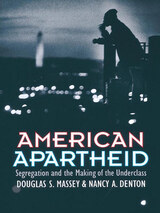
This powerful and disturbing book clearly links persistent poverty among blacks in the United States to the unparalleled degree of deliberate segregation they experience in American cities.
American Apartheid shows how the black ghetto was created by whites during the first half of the twentieth century in order to isolate growing urban black populations. It goes on to show that, despite the Fair Housing Act of 1968, segregation is perpetuated today through an interlocking set of individual actions, institutional practices, and governmental policies. In some urban areas the degree of black segregation is so intense and occurs in so many dimensions simultaneously that it amounts to "hypersegregation."
The authors demonstrate that this systematic segregation of African Americans leads inexorably to the creation of underclass communities during periods of economic downturn. Under conditions of extreme segregation, any increase in the overall rate of black poverty yields a marked increase in the geographic concentration of indigence and the deterioration of social and economic conditions in black communities. As ghetto residents adapt to this increasingly harsh environment under a climate of racial isolation, they evolve attitudes, behaviors, and practices that further marginalize their neighborhoods and undermine their chances of success in mainstream American society. This book is a sober challenge to those who argue that race is of declining significance in the United States today.

For more than a millennium, fatwas have guided and shaped Muslim understandings of Islamic law. The whole world knows of Ayatollah Khomeini’s fatwa in the Salman Rushdie case, yet this key institution in Muslim society has not been the subject of a major examination until now.
Ranging in import from the routine to the revolutionary, and in form from one-line answers to short treatises, fatwas have served to reaffirm received wisdom, caution against error, and chart novel responses to changing circumstances. The interpreters, the muftis of Islam, have included the greatest independent scholars of the ages, heads of large state bureaucracies, and unassuming jurists in local districts. Their vital task, which continues today in published collections as well as on radio and television, is to strive to interpret God’s design for the Muslim community.
Islamic Legal Interpretation uses an approach unique in Islamic studies, a casebook of expert analyses of fatwas from a wide range of times and places. The editors’ first chapter sets forth the origins, classical diversity, and modern development of the fatwa, while the following chapters illustrate particular opinions and their contexts. The approach throughout is interdisciplinary, as historians, lawyers, language specialists, and social scientists address fatwas as fundamental sources on both Islamic legal thought and Islamic social history.
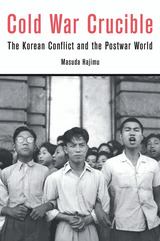
The end of World War II did not mean the arrival of peace. The major powers faced social upheaval at home, while anticolonial wars erupted around the world. American–Soviet relations grew chilly, but the meaning of the rivalry remained disputable. Cold War Crucible reveals the Korean War as the catalyst for a new postwar order. The conflict led people to believe in the Cold War as a dangerous reality, a belief that would define the fears of two generations.
In the international arena, North Korea’s aggression was widely interpreted as the beginning of World War III. At the domestic level, the conflict generated a wartime logic that created dividing lines between “us” and “them,” precipitating waves of social purges to stifle dissent. The United States allowed McCarthyism to take root; Britain launched anti-labor initiatives; Japan conducted its Red Purge; and China cracked down on counterrevolutionaries. These attempts to restore domestic tranquility were not a product of the Cold War, Masuda Hajimu shows, but driving forces in creating a mindset for it. Alarmed by the idea of enemies from within and faced with the notion of a bipolar conflict that could quickly go from chilly to nuclear, ordinary people and policymakers created a fantasy of a Cold War world in which global and domestic order was paramount.
In discovering how policymaking and popular opinion combined to establish and propagate the new postwar reality, Cold War Crucible offers a history that reorients our understanding of what the Cold War really was.
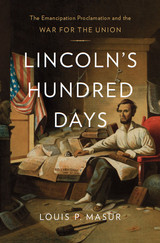
"The time has come now," Abraham Lincoln told his cabinet as he presented the preliminary draft of a "Proclamation of Emancipation." Lincoln's effort to end slavery has been controversial from its inception-when it was denounced by some as an unconstitutional usurpation and by others as an inadequate half-measure-up to the present, as historians have discounted its import and impact. At the sesquicentennial of the Emancipation Proclamation, Louis Masur seeks to restore the document's reputation by exploring its evolution.
Lincoln's Hundred Days is the first book to tell the full story of the critical period between September 22, 1862, when Lincoln issued his preliminary Proclamation, and January 1, 1863, when he signed the final, significantly altered, decree. In those tumultuous hundred days, as battlefield deaths mounted, debate raged. Masur commands vast primary sources to portray the daily struggles and enormous consequences of the president's efforts as Lincoln led a nation through war and toward emancipation. With his deadline looming, Lincoln hesitated and calculated, frustrating friends and foes alike, as he reckoned with the anxieties and expectations of millions. We hear these concerns, from poets, cabinet members and foreign officials, from enlisted men on the front and free blacks as well as slaves.
Masur presents a fresh portrait of Lincoln as a complex figure who worried about, listened to, debated, prayed for, and even joked with his country, and then followed his conviction in directing America toward a terrifying and thrilling unknown.



Since 1900, the science of geology has grown in a spectacular fashion. Not only have field studies been undertaken throughout vast areas of the earth’s surface previously unexplored or only superficially surveyed, but recent discoveries in physics, chemistry, and biology have provided geologists with new techniques of observation and experimentation, and radically new concepts and theories have been developed. This book presents source literature for the most important contributions to this remarkable expansion of geological knowledge. One of the world’s most distinguished geologists provides excerpts from sixty-five articles by sixty-three authors, selected with the advice of more than a score of leading scientists from all parts of the globe. Among the subjects discussed in this comprehensive volume are the constitution of the earth’s interior, the causes of earthquakes, radioactive timekeepers, the interpretation of submarine features and deep-sea cores, the origin and entrapment of petroleum, and crystal structure. Included are articles which led directly to the development of theories of paleomagnetism, metamorphism, cryopedology, and isostasy.
Source Book in Geology, 1900–1950 makes available several papers previously to be found in the libraries of only a few universities, and eight articles translated into English for the first time, of which four are by leading Soviet geologists.

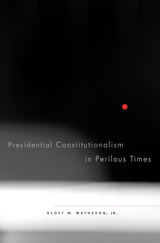
From the Constitution’s adoption, presidents, Congress, judges, scholars, the press, and the public have debated the appropriate scope of presidential power during a crisis, especially when presidents see bending or breaking the rules as necessary to protect the country from serious, even irreparable, harm.
Presidential Constitutionalism in Perilous Times examines this quandary, from Abraham Lincoln’s suspension of the writ of habeas corpus during the Civil War, Woodrow Wilson’s enforcement of the Espionage Act of 1917 during World War I, Franklin D. Roosevelt’s evacuation and internment of West Coast Japanese during World War II, Harry S. Truman’s seizure of the steel mills during the Korean War to George W. Bush’s torture, surveillance, and detention programs following the September 11, 2001, terrorist attacks.
Presidents have exercised extraordinary power to protect the nation in ways that raised serious constitutional concerns about individual liberties and separation of powers. By looking at these examples through different constitutional perspectives, Scott Matheson achieves a deeper understanding of wartime presidential power in general and of President Bush’s assertions of executive power in particular. America can function more effectively as a constitutional democracy in an unsafe world, he argues, if our leaders embrace an approach to presidential power that he calls executive constitutionalism.




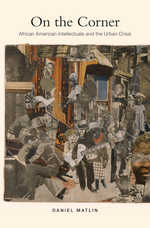
In July 1964, after a decade of intense media focus on civil rights protest in the Jim Crow South, a riot in Harlem abruptly shifted attention to the urban crisis embroiling America's northern cities. On the Corner revisits the volatile moment when African American intellectuals were thrust into the spotlight as indigenous interpreters of black urban life to white America, and examines how three figures--Kenneth B. Clark, Amiri Baraka, and Romare Bearden--wrestled with the opportunities and dilemmas their heightened public statures entailed. Daniel Matlin locates in the 1960s a new dynamic that has continued to shape African American intellectual practice to the present day, as black urban communities became the chief objects of black intellectuals' perceived social obligations.
Black scholars and artists offered sharply contrasting representations of black urban life and vied to establish their authority as indigenous interpreters. As a psychologist, Clark placed his faith in the ability of the social sciences to diagnose the damage caused by racism and poverty. Baraka sought to channel black fury and violence into essays, poems, and plays. Meanwhile, Bearden wished his collages to contest portrayals of black urban life as dominated by misery, anger, and dysfunction.
In time, each of these figures concluded that their role as interpreters for white America placed dangerous constraints on black intellectual practice. The condition of entry into the public sphere for African American intellectuals in the post-civil rights era has been confinement to what Clark called "the topic that is reserved for blacks."
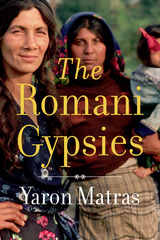
“Gypsies” have lived among Europeans since the Middle Ages. Yet Roms still seem exotic to Westerners, who often rely on fictional depictions for what they know, or think they know, about this much-misunderstood people. The Romani Gypsies challenges stereotypes that have long been the unwelcome travel companions of this community in Europe and the New World. Yaron Matras offers a perspective-changing account of who the Roms are, how they live today, and how they have survived over centuries.
Descendants of Indian migrants, Roms began moving into western Europe in the 1300s, refugees of a collapsing Byzantine Empire. By the 1500s they had spread throughout Europe, working as itinerant smiths and toolmakers, healers and entertainers, and would soon reach the Americas. Often described as Egyptian—hence the name Gypsies—they were ostracized as beggars, vilified as criminals, respected as artisans, and idealized as free spirits. They have been both enslaved and protected, forced to settle down and forcibly expelled, in a pattern of manipulation and persecution that persists in our own time.
Matras draws on decades of firsthand research into Romani life to explain the organization of Romani society, its shared language, history, and traditions, as well as differences among widely dispersed Romani groups. He also details the present-day dilemmas surrounding the struggle of Roms for political recognition in European countries which are, by turns, either ambivalent or openly hostile.


In this history of Japanese involvement in northeast China, the author argues that Japan's military seizure of Manchuria in September 1931 was founded on three decades of infiltration of the area. This incremental empire-building and its effect on Japan are the focuses of this book.
The principal agency in the piecemeal growth of Japanese colonization was the South Manchurian Railway Company, and by the mid-1920s Japan had a deeply entrenched presence in Manchuria and exercised a dominant economic and political influence over the area. Japanese colonial expansion in Manchuria also loomed large in Japanese politics, military policy, economic development, and foreign relations and deeply influenced many aspects of Japan's interwar history.
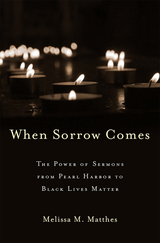
Since World War II, Protestant sermons have been an influential tool for defining American citizenship in the wake of national crises.
In the aftermath of national tragedies, Americans often turn to churches for solace. Because even secular citizens attend these services, they are also significant opportunities for the Protestant religious majority to define and redefine national identity and, in the process, to invest the nation-state with divinity. The sermons delivered in the wake of crises become integral to historical and communal memory—it matters greatly who is mourned and who is overlooked.
Melissa M. Matthes conceives of these sermons as theo-political texts. In When Sorrow Comes, she explores the continuities and discontinuities they reveal in the balance of state power and divine authority following the bombing of Pearl Harbor, the assassinations of JFK and MLK, the Rodney King verdict, the Oklahoma City bombing, the September 11 attacks, the Newtown shootings, and the Black Lives Matter movement. She argues that Protestant preachers use these moments to address questions about Christianity and citizenship and about the responsibilities of the Church and the State to respond to a national crisis. She also shows how post-crisis sermons have codified whiteness in ritual narratives of American history, excluding others from the collective account. These civic liturgies therefore illustrate the evolution of modern American politics and society.
Despite perceptions of the decline of religious authority in the twentieth century, the pulpit retains power after national tragedies. Sermons preached in such intense times of mourning and reckoning serve as a form of civic education with consequences for how Americans understand who belongs to the nation and how to imagine its future.

Philosophy and the Young Child presents striking evidence that young children naturally engage in a brand of thought that is genuinely philosophical. In a series of exquisite examples that could only have been gathered by a professional philosopher with an extraordinary respect for young minds, Gareth Matthews demonstrates that children have a capacity for puzzlement and mental play that leads them to tackle many of the classic problems of knowledge, value, and existence that have traditionally formed the core of philosophical thought. Matthews’s anecdotes reveal children reasoning about these problems in a way that must be taken seriously by anyone who wants to understand how children think.
Philosophy and the Young Child provides a powerful antidote to the widespread tendency to underestimate children’s mental ability and patronize their natural curiosity. As Matthews shows, even child psychologists as insightful as Piaget have failed to grasp the subtlety of children’s philosophical frame of mind. Only in children’s literature does Matthews find any sensitivity to children’s natural philosophizing. Old favorites like Winnie the Pooh, the Oz books, and The Bear That Wasn’t are full of philosophical puzzlers that amuse and engage children. More important, these stories manage to strip away the mental defensiveness and conventionality that so often prevent adults from appreciating the way children begin to think about the world.
Gareth Matthews believes that adults have much to gain if they can learn to “do philosophy” with children, and his book is a rich source of useful suggestions for parents, teachers, students, and anyone else who might like to try.
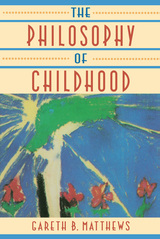
So many questions, such an imagination, endless speculation: the child seems to be a natural philosopher--until the ripe old age of eight or nine, when the spirit of inquiry mysteriously fades. What happened? Was it something we did--or didn't do? Was the child truly the philosophical being he once seemed? Gareth Matthews takes up these concerns in The Philosophy of Childhood, a searching account of children's philosophical potential and of childhood as an area of philosophical inquiry. Seeking a philosophy that represents the range and depth of children's inquisitive minds, Matthews explores both how children think and how we, as adults, think about them.
Adult preconceptions about the mental life of children tend to discourage a child's philosophical bent, Matthews suggests, and he probes the sources of these limiting assumptions: restrictive notions of maturation and conceptual development; possible lapses in episodic memory; the experience of identity and growth as "successive selves," which separate us from our own childhoods. By exposing the underpinnings of our adult views of childhood, Matthews, a philosopher and longtime advocate of children's rights, clears the way for recognizing the philosophy of childhood as a legitimate field of inquiry. He then conducts us through various influential models for understanding what it is to be a child, from the theory that individual development recapitulates the development of the human species to accounts of moral and cognitive development, including Piaget's revolutionary model.
The metaphysics of playdough, the authenticity of children's art, the effects of divorce and intimations of mortality on a child--all have a place in Matthews's rich discussion of the philosophical nature of childhood. His book will prompt us to reconsider the distinctions we make about development and the competencies of mind, and what we lose by denying childhood its full philosophical breadth.
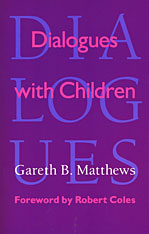

In this thorough and lively study, Allen Matusow, tracing the history of government policy on food and agriculture during the Truman administration, relates the process by which the United States government overcame disharmony among its own politicians and farmers to save Europe from famine in the years immediately following World War II.
The Department of Agriculture, which had asserted that “food will win the war and write the peace,” was often reluctant to believe its own slogan. Elucidating the policies involved in postwar planning for both foreign trade and domestic farm production, Matusow shows how the memorable fear of huge surpluses created by the Depression in the 1930s had affected the attitudes of government officials toward agricultural planning and production from 1945 to 1952.
Interpreting the origins and defeat of the Brannan Plan, the author finds remnants of that policy evident in the current adoption of production payments. Farm Policies and Politics in the Truman Years offers new insight into the creative agricultural policy which emerged, from hesitant beginnings, in Truman's second term.

As Japan’s pre–Pearl Harbor ambassador to the United States, Admiral Nomura Kichisaburō (1877–1964) played a significant role in a tense and turbulent period in Japanese–U.S. relations. Scholars tend to view his actions and missteps as ambassador as representing the failure of diplomacy to avert the outbreak of hostilities between the two paramount Pacific powers.
This extensively researched biography casts new light on the life and career of this important figure. Connecting his experiences as a naval officer to his service as foreign minister and ambassador, and later as “father” of Japan’s Maritime Self Defense Forces and proponent of the U.S.–Japanese alliance, this study reassesses Nomura’s contributions as a hard-nosed realist whose grasp of the underlying realities of Japanese–U.S. relations went largely unappreciated by the Japanese political and military establishment.
In highlighting the complexities and conundrums of Nomura’s position, as well as the role of the Imperial Navy in the formulation of Japan’s foreign policy, Peter Mauch draws upon rarely accessed materials from naval and diplomatic archives in Japan as well as various collections of personal papers, including Nomura’s, which Mauch discovered in 2005 and which are now housed in the National Diet Library.


Having a baby is surely one of the pinnacle events of a woman's life, full of joy, serenity, and contentment--or so society tells a new mother, who thus finds herself ill-prepared for the exhaustion, boredom, and isolation that can follow childbirth. The resulting depression--how it is experienced, and how it might be relieved--is the subject of Natasha Mauthner's insightful and compassionate book, which recounts the stories of new mothers caught between a cultural ideal and a far more complex reality.
In Mauthner's interviews with thirty-five new mothers in Britain and America, we see how women contend with images of motherhood as a state of bliss for everyone but themselves. The British women tend to view their depression as a personal failure of strength; American women, as a result of hormonal fluctuation. But all vividly describe a similar state of paralysis and loneliness, with alternating love, resentment, and guilt toward their babies.
Most usefully, these women reveal the positive impact that other new mothers had on their depression. Far more important than their own family's support or understanding, the sense of not being alone in their trials emerges as a key source of strength and healing for women struggling with postpartum depression.

At its inception in 1868, the modern Japanese state pursued policies and created institutions that lacked a coherent conception of religion. Yet the architects of the modern state pursued an explicit "religious settlement" as they set about designing a constitutional order through the 1880s. As a result, many of the cardinal institutions of the state, particularly the imperial institution, eventually were defined in opposition to religion.
Drawing on an assortment of primary sources, including internal government debates, diplomatic negotiations, and the popular press, Trent E. Maxey documents how the novel category of religion came to be seen as the "greatest problem" by the architects of the modern Japanese state. In Meiji Japan, religion designated a cognitive and social pluralism that resisted direct state control. It also provided the modern state with a means to contain, regulate, and neutralize that plurality.

Maximos the Confessor (580–662) occupies a unique position in the history of Byzantine philosophy, theology, and spirituality. His profound spiritual experiences and penetrating theological vision found complex and often astonishing expression in his unparalleled command of Greek philosophy, making him one of the most challenging and original Christian thinkers of all time. So thoroughly did his thought come to influence the Byzantine theological tradition that it is impossible to trace the subsequent history of Orthodox Christianity without knowledge of his work.
The Ambigua (or “Book of Difficulties”) is Maximos’s greatest philosophical and doctrinal work, in which his daring originality, prodigious talent for speculative thinking, and analytical acumen are on lavish display. In the Ambigua, a broad range of theological topics—cosmology, anthropology, the philosophy of mind and language, allegory, asceticism, and metaphysics—are transformed in a synthesis of Aristotelian logic, Platonic metaphysics, Stoic psychology, and the arithmetical philosophy of a revived Pythagoreanism. The result is a labyrinthine map of the mind’s journey to God that figured prominently in the Neoplatonic revival of the Komnenian Renaissance and the Hesychast Controversies of the Late Byzantine period.
This remarkable work has never before been available in a critically-based edition or English translation.

Maximos the Confessor (580–662) occupies a unique position in the history of Byzantine philosophy, theology, and spirituality. His profound spiritual experiences and penetrating theological vision found complex and often astonishing expression in his unparalleled command of Greek philosophy, making him one of the most challenging and original Christian thinkers of all time. So thoroughly did his thought come to influence the Byzantine theological tradition that it is impossible to trace the subsequent history of Orthodox Christianity without knowledge of his work.
The Ambigua (or “Book of Difficulties”) is Maximos’s greatest philosophical and doctrinal work, in which his daring originality, prodigious talent for speculative thinking, and analytical acumen are on lavish display. In the Ambigua, a broad range of theological topics—cosmology, anthropology, the philosophy of mind and language, allegory, asceticism, and metaphysics—are transformed in a synthesis of Aristotelian logic, Platonic metaphysics, Stoic psychology, and the arithmetical philosophy of a revived Pythagoreanism. The result is a labyrinthine map of the mind’s journey to God that figured prominently in the Neoplatonic revival of the Komnenian Renaissance and the Hesychast Controversies of the Late Byzantine period.
This remarkable work has never before been available in a critically-based edition or English translation.


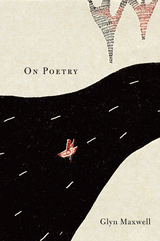
“This is a book for anyone,” Glyn Maxwell declares of On Poetry. A guide to the writing of poetry and a defense of the art, it will be especially prized by writers and readers who wish to understand why and how poetic technique matters. When Maxwell states, “With rhyme what matters is the distance between rhymes” or “the line-break is punctuation,” he compresses into simple, memorable phrases a great deal of practical wisdom.
In seven chapters whose weird, gnomic titles announce the singularity of the book—“White,” “Black,” “Form,” “Pulse,” “Chime,” “Space,” and “Time”—the poet explores his belief that the greatest verse arises from a harmony of mind and body, and that poetic forms originate in human necessities: breath, heartbeat, footstep, posture. “The sound of form in poetry descended from song, molded by breath, is the sound of that creature yearning to leave a mark. The meter says tick-tock. The rhyme says remember. The whiteness says alone,” Maxwell writes. To illustrate his argument, he draws upon personal touchstones such as Emily Dickinson and Robert Frost. An experienced teacher, Maxwell also takes us inside the world of the creative writing class, where we learn from the experiences of four aspiring poets.
“You master form you master time,” Maxwell says. In this guide to the most ancient and sublime of the realms of literature, Maxwell shares his mastery with us.

For more than a century, in settings where the political branches of government were unable or unwilling to exercise self-restraint, the Supreme Court was disposed to treat federal war powers legislation as exempt from judicial review, an attitude that permitted numerous abuses from Prohibition to press censorship.
Though the First World War officially ended in 1918, the Senate’s rejection of the Versailles Treaty kept the United States in a legal state of war until late 1921. Exploring the interplay between political and social events and the evolution of legal theory Christopher May tells how during this challenging three-year period, the government invoked the war powers to pursue ends otherwise beyond its reach: with the backing of Congress and seemingly free from judicial scrutiny, the Wilson administration took over the country’s rail and communications systems, outlawed profiteering, prosecuted strikers, suppressed “radicals” and censored the leftist press. None of these measures bore any true relation to the war, says the author, who then describes the course through which the Supreme Court, confronted by this pattern of abuse, finally abandoned its long-standing refusal to review the constitutionality of war powers legislation.
In the Name of War explores the roles played by Woodrow Wilson, Joseph Tumulty, Albert Burleson, and A. Mitchell Palmer—men whose personal ambitions frequently shaped official policy in the late Progressive Era. After analyzing the Court’s more recent record, including the internment of Japanese-Americans in World War II, May draws some practical conclusions about the use of judicial intervention in time of crisis that are sure to attract the attention of lawyers, legal scholars, historians, and students of the Constitution.




This volume explores commercial relations between the United States and China from the eighteenth century until 1949, fleshing out with facts the romantic and shadowy image of "the China trade." These nine chapters by specialists in the field have developed from papers they presented at a conference supported by the national Committee on American-East Asian Relations.
The work begins with an Introduction by John K. Fairbank, then moves on to analysis of the old China trade up to the American Civil War, centering on traditional Chinese exports of tea and silk. A second section deals with American imports into China--cotton textiles and textile-related goods, cigarettes, kerosene. Finally, the impact of the trade on both countries is assessed and the operations of American-owned and multinational companies in China are examined. For both the United States and China, the economic importance of the trade proves to have been less than the legend might suggest.

In January 1973, for the first time in American history, principal participants in a major election met to discuss the science and the art of campaign strategy: the planning, calculation, contrivance, miscalculation, and mischance that determine what the electorate sees. Here campaign managers, pollsters, and journalists met to compare notes on their techniques and tactics and on their successes and failures as they reviewed the events of the primaries and election:
the poor decisions made in the face of complex state primary laws;
the decline of Muskie and the rise of McGovern;
the significance of issues versus Nixon's image;
the effects of party reform on the Democratic convention;
the credentials fights;
the twists of strategy during the final months of the campaign;
the way the press covered the campaign and how reporters were treated by the various staffs;
the lessons for 1976 drawn by reporters and campaign people.
The straightforward exchanges took place at the Harvard Conference on Campaign Decision-Making. Eighteen key people participated, including those in the campaigns of Nixon, McGovern, Wallace, Muskie, Humphrey, Jackson, and McCloskey. Four political correspondents--David Broder, James Naughton, Al Otten, and James Perry--expertly guided the conversation, probing for additional insights.
The transcript of the conference--oral history at its best--has been carefully edited and makes absorbing reading. Included are brief sketches of the participants, a chronology of major events of the campaign, tables of campaign statistics, and a full index.

In 1944, as the end of World War II approached, an important series of talks was held to plan the formation of postwar international institutions. The site for the conversations was Dumbarton Oaks in Washington, DC, a research institute administered by Harvard University. In a spirit of optimism, Secretary of State Cordell Hull said that the purpose was “to create the institutional foundations for a just and enduring peace,” while Soviet ambassador Andrei Gromyko spoke of an international organization that would “guarantee for the peoples peace, security, and prosperity in the future.” The meetings, which included debates on a variety of issues, were a first step toward the creation of the United Nations.
In 1994, the “Dumbarton Oaks Conference, 1944–1994” brought together scholars and policymakers who have been involved with the study of international organizations or have played important roles in them. The conference papers in this volume examine both the formation of the United Nations and a number of current issues, including human rights, collective economic sanctions, peacekeeping operations, and the evolution of the role of the Secretary-General.


October 1962: the United States and the Soviet Union stood eyeball to eyeball, each brandishing enough nuclear weapons to obliterate civilization in the Northern Hemisphere. It was one of the most dangerous moments in world history. Day by day, for two weeks, the inner circle of President Kennedy's National Security Council debated what to do, twice coming to the brink of attacking Soviet military units in Cuba--units equipped for nuclear retaliation. And through it all, unbeknownst to any of the participants except the President himself, tape was rolling, capturing for posterity the deliberations that might have ended the world as we know it.
These are the full and authenticated transcripts of those audio recordings. Arguably the most important document in the history of the Cuban missile crisis, these transcripts are also a unique window on a drama rarely if ever witnessed by those outside the halls of power: the moment-by-moment decisionmaking of those with the fate of the West in their hands in a constantly changing, world-threatening situation. At the center of it all is President Kennedy, wary of experts after the debacle of the Bay of Pigs, puzzled and distrustful after confrontations with Khrushchev in Vienna and Berlin, and ever mindful of the responsibility symbolized by the satchel his military aides hold nearby, containing the codes to unleash nuclear warfare.
In one brief segment, midway through the crisis, the President, alone, speaks his thoughts into the machine. In others, he copes with hawks from Capitol Hill and the Pentagon. And in the last meeting, we hear him explaining and defending the formula that finally defused the crisis. With him throughout are his team from the State Department, including Secretary Dean Rusk, Under Secretary George Ball, and Llewellyn Thompson; his Defense team, especially Robert McNamara; his key assistants, Theodore Sorenson and McGeorge Bundy; Secretary of the Treasury Douglas Dillon; Vice President Lyndon Johnson; and, of course, his brother Robert, the Attorney General. All are identified and put into their proper context by the editors, whose introduction makes sense of this singular drama within the history of the Cold War and the Kennedy administration and whose conclusions will shape our understanding of the Cold War.

The Gê-speaking tribes of Central Brazil have always been an anomaly in the annals of anthropology; their exceedingly simple technology contrasts sharply with their highly complex sociological and ideological traditions. Dialectical Societies, the outgrowth of extended anthropological research organized by David Maybury-Lewis, at long last demystifies Gê social structure while modifying and reinterpreting some of the traditional ideas held about kinship, affiliation, and descent.
Each of the seven contributors deals with a different lowland tribe, butall of them address an ideological focus on the dualistic tribal organization that is here defined as fundamental to the Gê As a collection, their work comprises a substantial revision of the hitherto undeveloped and largely ignored ethnography of Central Brazil.

How was frontier expansion rationalized in the Americas during the late nineteenth century? As new states fleshed out expanded national maps, how did they represent their advances? Were there any distinct pan-American patterns? The renowned anthropologist and human rights advocate David Maybury-Lewis saw the Latin American frontiers as relatively unknown physical spaces as well as unexplored academic “territory.” He invited eight specialists to explore public narratives of the expansion of Argentina, Brazil, Chile, and the western regions of Canada and the United States during the late nineteenth century, a time when those who then identified as “Americans” claimed territories in which indigenous peoples, who were now seen as economic and political obstacles, lived. The authors examine the narrative forms that stirred or rationalized expansion, and emphasize their impact on the native residents.
The authors illustrate the variety and the similarities of these nationalist ideas and experiences, which were generally expressed in symbolic and cultural terms rather than on simple materialist or essentialist grounds. The cases also point out that civic nationalism, often seem as inclusive and more benign than ethnic nationalism, can produce similarly destructive human and cultural ends. The essays thus suggest a view of nationalism as a theoretical concept, and of frontier expansion as a historical phenomenon.

The indigenous people of the hemisphere have resisted a five-hundred-year assault, fighting to maintain their cultural identities. During this time, authorities in the Americas have insisted that the toleration of indigenous societies and cultures would undermine their respective states. In recent years, however, the nations of the Americas have started to reverse themselves. They are altering their constitutions and proclaiming themselves multiethnic. Why is this happening now? The Politics of Ethnicity: Indigenous Peoples in Latin American States, edited by David Maybury-Lewis, helps us understand the reasons and history behind these times of transition.
The book provides a valuable overview of current problems facing indigenous peoples in their relation with national states in Latin America, from the highlands of Mexico to the jungles of Brazil. The traditional, sometimes centuries old, relations between states and indigenous peoples are now changing and being rediscussed. The collection, authored by U.S. and Latin American anthropologists using interdisciplinary approaches, enables the reader to understand these recent developments in a comparative framework. An ambitious and quite thorough collection, it is brought together skillfully by one of the discipline’s maître penseurs.

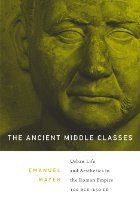
Our image of the Roman world is shaped by the writings of Roman statesmen and upper class intellectuals. Yet most of the material evidence we have from Roman times—art, architecture, and household artifacts from Pompeii and elsewhere—belonged to, and was made for, artisans, merchants, and professionals. Roman culture as we have seen it with our own eyes, Emanuel Mayer boldly argues, turns out to be distinctly middle class and requires a radically new framework of analysis.
Starting in the first century bce, ancient communities, largely shaped by farmers living within city walls, were transformed into vibrant urban centers where wealth could be quickly acquired through commercial success. From 100 bce to 250 ce, the archaeological record details the growth of a cosmopolitan empire and a prosperous new class rising along with it. Not as keen as statesmen and intellectuals to show off their status and refinement, members of this new middle class found novel ways to create pleasure and meaning. In the décor of their houses and tombs, Mayer finds evidence that middle-class Romans took pride in their work and commemorated familial love and affection in ways that departed from the tastes and practices of social elites.

Children from poor families generally do a lot worse than children from affluent families. They are more likely to develop behavior problems, to score lower on standardized tests, and to become adults in need of public assistance.
Susan Mayer asks whether income directly affects children's life chances, as many experts believe, or if the factors that cause parents to have low incomes also impede their children's life chances. She explores the question of causation with remarkable ingenuity. First, she compares the value of income from different sources to determine, for instance, if a dollar from welfare is as valuable as a dollar from wages. She then investigates whether parents' income after an event, such as teenage childbearing, can predict that event. If it can, this suggests that income is a proxy for unmeasured characteristics that affect both income and the event. Next she compares children living in states that pay high welfare benefits with children living in states with low benefits. Finally, she examines whether national income trends have the expected impact on children. Regardless of the research technique, the author finds that the effect of income on children's outcomes is smaller than many experts have thought.
Mayer then shows that the things families purchase as their income increases, such as cars and restaurant meals, seldom help children succeed. On the other hand, many of the things that do benefit children, such as books and educational outings, cost so little that their consumption depends on taste rather than income. Money alone, Mayer concludes, does not buy either the material or the psychological well-being that children require to succeed.
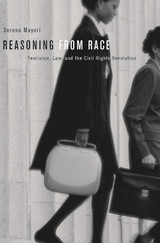
Informed in 1944 that she was “not of the sex” entitled to be admitted to Harvard Law School, African American activist Pauli Murray confronted the injustice she called “Jane Crow.” In the 1960s and 1970s, the analogies between sex and race discrimination pioneered by Murray became potent weapons in the battle for women’s rights, as feminists borrowed rhetoric and legal arguments from the civil rights movement. Serena Mayeri’s Reasoning from Race is the first book to explore the development and consequences of this key feminist strategy.
Mayeri uncovers the history of an often misunderstood connection at the heart of American antidiscrimination law. Her study details how a tumultuous political and legal climate transformed the links between race and sex equality, civil rights and feminism. Battles over employment discrimination, school segregation, reproductive freedom, affirmative action, and constitutional change reveal the promise and peril of reasoning from race—and offer a vivid picture of Pauli Murray, Ruth Bader Ginsburg, and others who defined feminists’ agenda.
Looking beneath the surface of Supreme Court opinions to the deliberations of feminist advocates, their opponents, and the legal decision makers who heard—or chose not to hear—their claims, Reasoning from Race showcases previously hidden struggles that continue to shape the scope and meaning of equality under the law.

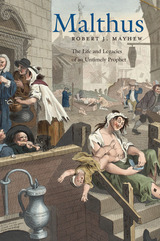
Thomas Robert Malthus’s An Essay on the Principle of Population was an immediate succès de scandale when it appeared in 1798. Arguing that nature is niggardly and that societies, both human and animal, tend to overstep the limits of natural resources in “perpetual oscillation between happiness and misery,” he found himself attacked on all sides—by Romantic poets, utopian thinkers, and the religious establishment. Though Malthus has never disappeared, he has been perpetually misunderstood. This book is at once a major reassessment of Malthus’s ideas and an intellectual history of the origins of modern debates about demography, resources, and the environment.
Against the ferment of Enlightenment ideals about the perfectibility of mankind and the grim realities of life in the eighteenth century, Robert Mayhew explains the genesis of the Essay and Malthus’s preoccupation with birth and death rates. He traces Malthus’s collision course with the Lake poets, his important revisions to the Essay, and composition of his other great work, Principles of Political Economy. Mayhew suggests we see the author in his later writings as an environmental economist for his persistent concern with natural resources, land, and the conditions of their use. Mayhew then pursues Malthus’s many afterlives in the Victorian world and beyond.
Today, the Malthusian dilemma makes itself felt once again, as demography and climate change come together on the same environmental agenda. By opening a new door onto Malthus’s arguments and their transmission to the present day, Robert Mayhew gives historical depth to our current planetary concerns.

This will stand as the definitive account of Robert Browning's development to maturity as a man and poet. Drawing on all available material, including important new manuscript findings, John Maynard reconstructs the circumstances of Browning's youth—his ancestry, his attractive and eccentric family, life in the new suburban London, his early understanding of himself and the world around him, his rich cultural education at home and with his teachers and friends and gives us a warm and convincing picture of Browning's boyhood and growth. Maynard traces Browning's early efforts to define his role as a poet, providing a full critical interpretation of his relation to the Romantics, especially the peculiarly powerful influence Shelley exerted on his early work.
The development of Browning's mind is examined in his response to his early schooling and private tutoring at home, his year at the new London University, and his decision to drop out of the university and all conventional career plans. The history concludes with a survey of Browning's reading in the period of self-education that initiated his mature work as a major poet of our modern era. Maynard's intention throughout is not to provide a day-to-day account of a boy and young man's life, but to flesh out the larger epic of a gifted child's formation in his environment, and the emergence of his own direction out of the context of his family, society, and literary culture. In so doing he has achieved a model case study of the development of a young man's mind and of a young poet's sense of identity as a creative artist. And he has recaptured the social, physical, and cultural ambiance of middle-class London in the early nineteenth century. It is a story told with grace and critical good sense.



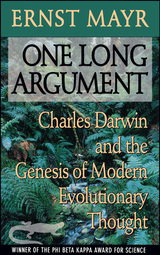
Evolutionary theory ranks as one of the most powerful concepts of modern civilization. Its effects on our view of life have been wide and deep. One of the most world-shaking books ever published, Charles Darwin’s On the Origin of Species, first appeared in print over 130 years ago, and it touched off a debate that rages to this day.
Every modern evolutionist turns to Darwin’s work again and again. Current controversies in the life sciences very often have as their starting point some vagueness in Darwin’s writings or some question Darwin was unable to answer owing to the insufficient biological knowledge available during his time. Despite the intense study of Darwin’s life and work, however, many of us cannot explain his theories (he had several separate ones) and the evidence and reasoning behind them, nor do we appreciate the modifications of the Darwinian paradigm that have kept it viable throughout the twentieth century.
Who could elucidate the subtleties of Darwin’s thought and that of his contemporaries and intellectual heirs—A. R. Wallace, T. H. Huxley, August Weismann, Asa Gray—better than Ernst Mayr, a man considered by many to be the greatest evolutionist of the century? In this gem of historical scholarship, Mayr has achieved a remarkable distillation of Charles Darwin’s scientific thought and his enormous legacy to twentieth-century biology. Here we have an accessible account of the revolutionary ideas that Darwin thrust upon the world. Describing his treatise as “one long argument,” Darwin definitively refuted the belief in the divine creation of each individual species, establishing in its place the concept that all of life descended from a common ancestor. He proposed the idea that humans were not the special products of creation but evolved according to principles that operate everywhere else in the living world; he upset current notions of a perfectly designed, benign natural world and substituted in their place the concept of a struggle for survival; and he introduced probability, chance, and uniqueness into scientific discourse.
This is an important book for students, biologists, and general readers interested in the history of ideas—especially ideas that have radically altered our worldview. Here is a book by a grand master that spells out in simple terms the historical issues and presents the controversies in a manner that makes them understandable from a modern perspective.

Representative of the international acclaim accorded Ernst Mayr’s Animal Species and Evolution, published in 1963, is Sir Julian Huxley’s description of it as “a magistral book…certainly the most important study of evolution that has appeared in many years—perhaps since the publication of On the Origin of Species.” In his extraordinary book, Mayr fully explored, synthesized, and evaluated man’s knowledge about the nature of animal species and the part they play in the process of evolution.
In this long-awaited abridged edition, Mayr’s definitive work is made available to the interested nonspecialist, the college student, and the general reader. The author has retained the dominant themes of his original study—themes now more widely accepted than they were in 1963: the species is the most important unit of evolution; individuals (and not genes) are the targets of natural selection, hence the fitness of “a” gene is a nebulous if not misleading concept; and the most important genetic phenomena in species are species-specific regulatory systems that give species internal cohesion.
Each of the twenty chapters of the original edition has been revised; six have been extensively reworked. Discussions of peripheral subjects and massive citations of the literature have been eliminated, but the glossary has been greatly expanded. The focal point of the volume is, naturally, the species—a reproductively isolated aggregate of interbreeding populations. Presenting an overview of evolutionary biology in Chapter 1, Mayr then considers the nature of species, their population structure, their biological interactions, the multiplication of species, and their role in evolution.
Because of the impossibility of experimenting with man and because an understanding of man’s biology is indispensable for safeguarding his future, emphasis throughout the book is placed on those findings from higher animals which are directly applicable to man. The last chapter, “Man as a Biological Species,” is of particular interest to the general reader. Mayr concludes that while modern man appears to be as well adapted for survival purposes as were his ancestors, there is much evidence to suggest that he is threatened by the loss of his most typically human characteristics.

Ernst Mayr is perhaps the most distinguished biologist of the twentieth century, and Systematics and the Origin of Species may be one of his greatest and most influential books. This classic study, first published in 1942, helped to revolutionize evolutionary biology by offering a new approach to taxonomic principles and correlating the ideas and findings of modern systematics with those of other life science disciplines. This book is one of the foundational documents of the “Evolutionary Synthesis.” It is the book in which Mayr pioneered his new concept of species based chiefly on such biological factors as interbreeding and reproductive isolation, taking into account ecology, geography, and life history.
In his new Introduction for this edition, Mayr reflects on the place of this enduring work in the subsequent history of his field.
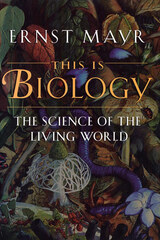
Biology until recently has been the neglected stepchild of science, and many educated people have little grasp of how biology explains the natural world. Yet to address the major political and moral questions that face us today, we must acquire an understanding of their biological roots. This magisterial new book by Ernst Mayr will go far to remedy this situation. An eyewitness to this century's relentless biological advance and the creator of some of its most important concepts, Mayr is uniquely qualified to offer a vision of science that places biology firmly at the center, and a vision of biology that restores the primacy of holistic, evolutionary thinking.
As he argues persuasively, the physical sciences cannot address many aspects of nature that are unique to life. Living organisms must be understood at every level of organization; they cannot be reduced to the laws of physics and chemistry. Mayr's approach is refreshingly at odds with the reductionist thinking that dominated scientific research earlier in this century, and will help to redirect how people think about the natural world.
This Is Biology can also be read as a "life history" of the discipline--from its roots in the work of Aristotle, through its dormancy during the Scientific Revolution and its flowering in the hands of Darwin, to its spectacular growth with the advent of molecular techniques. Mayr maps out the territorial overlap between biology and the humanities, especially history and ethics, and carefully describes important distinctions between science and other systems of thought, including theology. Both as an overview of the sciences of life and as the culmination of a remarkable life in science, This Is Biology will richly reward professionals and general readers alike.



Biology was forged into a single, coherent science only within living memory. In this volume the thinkers responsible for the “modern synthesis” of evolutionary biology and genetics come together to analyze that remarkable event.
In a new Preface, Ernst Mayr calls attention to the fact that scientists in different biological disciplines varied considerably in their degree of acceptance of Darwin’s theories. Mayr shows us that these differences were played out in four separate periods: 1859 to 1899, 1900 to 1915, 1916 to 1936, and 1937 to 1947. He thus enables us to understand fully why the synthesis was necessary and why Darwin’s original theory—that evolutionary change is due to the combination of variation and selection—is as solid at the end of the twentieth century as it was in 1859.

READERS
Browse our collection.
PUBLISHERS
See BiblioVault's publisher services.
STUDENT SERVICES
Files for college accessibility offices.
UChicago Accessibility Resources
home | accessibility | search | about | contact us
BiblioVault ® 2001 - 2024
The University of Chicago Press



